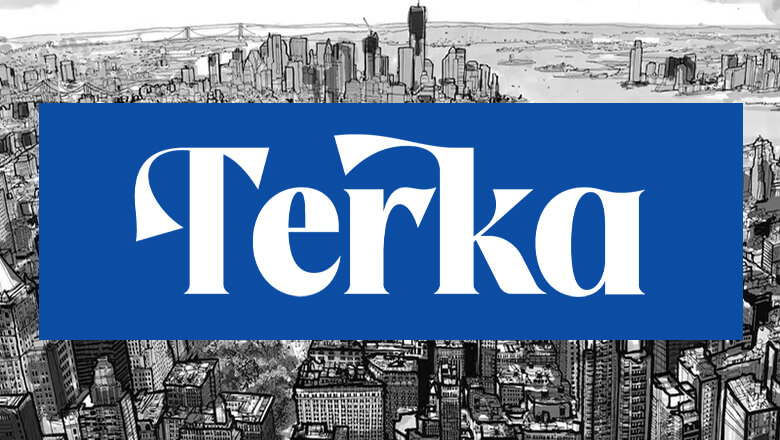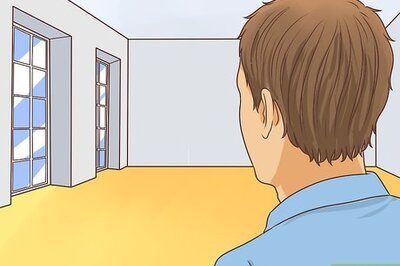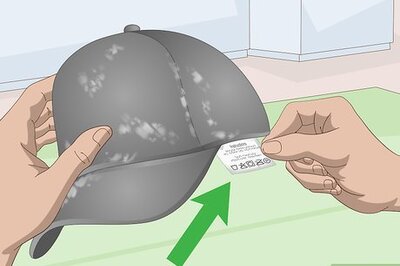
views
Easy Yoga Exercises for Couples
Partner Breathing Sit cross-legged on the ground with your legs crossed at the ankles or shins. Let your partner’s back rest against yours. Gently place your hands on your thighs or knees. Then, focus on the feelings you’re experiencing in this pose. Inhale and exhale naturally, and take note of how the back of your rib cage feels against your partner’s. Continue for 3-5 minutes. Why You’ll Love This Pose: This beginner-friendly pose can help you connect with your partner and work together to calm each other’s nervous systems.
Temple Stand up straight and face your partner directly. Keep your feet hip-width apart. On an exhale, extend your arms over your head and begin to bend forward at the hips until your hands meet your partner's. Continue to gradually fold forward until your elbows, forearms, and hands are resting against your partner's elbows, forearms, and hands. Adjust your stance so that you and your partner are resting an equal amount of weight against each other. Hold the pose for 5-7 breaths, then slowly walk toward each other while bringing your torso upright and letting your arms fall to the sides. Why You’ll Love This Pose: This pose helps to open up and stretch your shoulders and chest, and it can also help you feel more connected and in sync with your partner.
Partner Forward Fold Face each other in a seated position, then extend your legs out in a wide “V” shape (and have your partner do the same). Ensure that your kneecaps are facing straight up toward your ceiling and that the soles of your feet are touching. Reach your arms toward each other, with Partner A grasping Partner B’s forearms with their hands. Inhale together and envision your spine lengthening. Then, exhale while Partner B hinges forward from the hips and Partner B leans backward (keeping their spine and arms straight). Hold the pose with relaxed bodily tension for 5 to 7 breaths. When you’re ready to come out of the position, release each other’s arms and sit upright. Repeat the pose in the opposite direction with the roles exchanged. Why You’ll Love This Pose: This pose can open up your hamstrings and provide some much-needed calm to the person in the forward fold.
Seated Twist Sit back-to-back with your partner with your legs crossed. Put your right hand on your partner’s left thigh, and put your left hand on your own right knee. Have your partner assume the same position. On an inhale, stretch your spine and visualize it lengthening. On the exhale, gently twist your body to the right. Hold this position for four to six breaths, then untwist, switch sides, and repeat. If your back cracks a little bit while you’re twisting, don’t worry too much. It’s perfectly normal, especially if you haven’t fully warmed up! Why You’ll Love This Pose: Not only does this pose’s twisting motion help to stretch the spine, but it’s also been shown to improve digestion and aid in body detoxification.
Backbend with Forward Fold Sit back to back on the ground with your partner. Decide who will be Partner A (doing the forward fold) and who will be Partner B (doing the backbend). Have Partner A reach their hands forward and rest their forehead on a surface in front of them—either a yoga mat or an elevated block. Have Partner B lean backward against their partner’s back and open up their chest and heart region. Breathe deeply with a natural rhythm and see if you can feel each other’s breathing. Hold this pose for five breaths, then switch when you’re ready. Why You’ll Love This Pose: This adjustable pose allows both you and your partner to stretch various parts of your body.
Partner Savasana Lie flat on your backs on the floor. Hold one of your partner’s hands in yours. Allow your body to sink into the ground beneath you and enter a state of deep relaxation. Relax in this position for 5-10 minutes. Why You’ll Love This Pose: This pose is really relaxing, especially at the end of a strenuous yoga session. It allows you and your partner to calm your bodies and nervous systems and to really feel the effects of your yoga practice.
Seated Side Bend Sit cross-legged on the floor with your back resting against your partner’s. Align your right arm with your partner’s left arm, then simultaneously lift your connected arms up and above your heads. Follow the path of your arms and bend toward the opposite side of your body. Return to your starting position, then repeat on the opposite side. Why You’ll Love This Pose: On its own, the side bend can make you feel more grounded and open up your chest. Completing this pose with a partner may allow you to find greater stability and feel more alignment in your body.
Standing Shoulder Opener Stand an arm’s length away from your partner and place your hands on one another’s shoulders. Start to take small steps backward and away from each other while keeping your arms and legs completely straight. Your torsos will begin to naturally lean forward—keep moving backward until your upper body is parallel to the ground. Then, begin to drop your chest down while keeping your hands firmly placed on your partner’s shoulders. Why You’ll Love This Pose: This pose can provide a feeling of openness and connection between you and your partner while simultaneously stretching out your shoulders, chest, and upper back.
Relaxation Pose Sit side-by-side but facing in opposite directions. Spread your legs wide and hold each other’s innermost hands. Twist your upper body slightly away from your partner as you begin to lean backward. Rely on your partner’s support (and lend them yours) as you move backward until the small of your back makes contact with your partner’s upper thigh. Let your back bend slightly until your upper body and head come into contact with the floor. Remain in this pose, taking deep breaths, until both you and your partner are ready to exit the position. Why You’ll Love This Pose: This pose can help you and your partner feel completely relaxed, comfortable, and connected in each other’s company. You may even be able to sync up your breathing or sync up your heartbeats, which has been shown to foster intimacy.
Seated Cat Cow Sit cross-legged and face one another with your knees touching. Reach out and grasp each other’s forearms. Inhale and exhale naturally while rocking back and forth to find a comfortable equilibrium. Then, simultaneously arch your backs and visualize lifting your heart to the sky. If you’d like, drop your head back for added comfort. On an exhale, draw your chin to your chest, round your back, and gaze toward your own navel. Repeat this movement for several minutes, following the rhythm of your breath and observing how your shoulder and back muscles flex and relax. Be careful not to hyperextend your elbows, warns Jones. “When you’re bearing weight down into the arms, keep a very soft bend in your elbows. This creates more structural stability around the joint…When there’s hyperextension in the elbows, the muscles become more lax and all of that joint space becomes less stable.” Why You’ll Love This Pose: This pose can help to “alleviate bodily tension, especially through the spine,” explains Oyang. “Especially now, when we’re indoors a lot, it’s good to get some that tightness and discomfort out of the body.”
Paired Crocodile Lie on your stomach so that you’re face-to-face with your partner. Stack your forearms on top of each other and rest your forehead on top of the stack, instructs Jones. Rest your legs so that they’re a comfortable distance apart and turn your feet outward. Bring your arms in enough to lift your upper ribs and chest off the floor (while keeping your lower ribs on the floor). Relax your facial muscles and take note of the places in your body that move as you breathe in tandem with your partner. Hold the pose for “two minutes, or even longer if you’re feeling good in it,” says Jones. Why You’ll Love This Pose: The Crocodile Pose can help release tension in your back, neck, and shoulders, while also stimulating digestion and relieving constipation.
Yab Yum Have one partner (typically the larger or stronger one) sit cross-legged on the floor. As the other partner, sit on top of your partner’s thighs and cross your ankles behind their back. Both partners should keep their spines straight and gently touch their foreheads together. Breathe in a synchronized rhythm, either with your eyes closed or gazing into each other’s eyes. If the base partner can achieve the lotus position (with both feet resting on their knees), that will give the strongest possible foundation for the pose. Why You’ll Love This Pose: This sensual position is well-known for deepening emotional connection, reviving feelings of love and unity, and aligning the chakras of two partners.
Partner Warrior Pose Face away from your partner and place your left foot next to theirs. Enter into a Warrior II pose: stand with your feet slightly wider than your hips, angle your outside foot slightly inward, slightly bend the knee of your forward-facing foot, and extend your arms to be parallel to the floor. Then, lift your right hand up and over your head to take hold of your partner’s hand. Hold the pose for several breaths, then repeat on the opposite side. Why You’ll Love This Pose: This pose can help you and your partner to improve physical strength in your arms, core, and shoulders, as well as balance and flexibility throughout your bodies.
Huddle Pose Sit on your heels with your legs spread far apart and your knees bent. Place yourself about 3 feet (0.91 m) from your partner and sit face-to-face with them. Inhale simultaneously and raise your arms above your head. Exhale and bend forward toward each other, resting your flat palms on each other’s shoulders. From this kneeling position, continue to fold forward and bring your forehead as close to the ground as possible. Why You’ll Love This Pose: Huddle pose can help you and your partner feel more connected since you’ll be leaning on each other for emotional and physical support.
Downward Dog and Child’s Pose Have one partner assume a wide-kneed child’s pose with their big toes touching, their knees spread hip-width apart, and their arms outstretched and shoulder-width apart. If you’re the other partner, stand facing your partner in child’s pose and grasp one of their ankles with each hand. Walk your feet back until your partner’s elbows are just barely lifted off the ground, giving them a gentle stretch along the side of their upper body. Then, slowly hinge forward at your hips and place your hands on the back of your partner’s pelvis. If you have tight hamstrings, you can slightly bend your knees. Place your hands on the fleshiest part of the back of your partner’s pelvis (not directly on the spine). Shift more of your weight onto your hands, if it helps, and gently massage the back of your partner’s pelvis. Hold the pose for five to six breaths. Then, have the standing partner bend their knees, shift their weight onto their heels, and come into an upright position. Why You’ll Love This Pose: Both of these positions provide some of the deepest stretches that yoga can offer. By performing them with your partner, you’ll be able to get even more out of each pose.
Standing Backbend Face your partner in a standing position and take hold of their forearms. Keep your core engaged and gently lean away from your partner, using their support to stay stable. Keep your shoulders back and your head extended to allow your chest to open up further. Once you’re ready to end the pose, return your head to a neutral position before straightening your back and standing upright. Why You’ll Love This Pose: This pose can enhance posture, open up your heart and chest, increase your flexibility, and foster a more intimate connection between you and your partner.
Intermediate Yoga Exercises for Couples
Standing Forward Fold Stand up straight and face away from your partner, keeping your heels about 6 inches (150 mm) apart. Slowly hinge at the hips and fold forward. Reach your hands behind your legs and grasp your partner’s shins. Hold this pose for five breaths, then gently release. Why You’ll Love This Pose: This pose can deepen the connection between you and your partner, since it relies on your mutual trust and physical support of each other. Eventually, this pose can also ease you into an unsupported forward fold.
Twin Tree Stand side by side and face the same direction. Begin about 2–3 feet (0.61–0.91 m) apart, then bring the palms of your inner arms together and draw them above your heads. Then, slowly bend the knees of each of your outer legs. Touch the bottom of your foot to the thigh of your inner leg to fully draw your outer leg up. Keep this pose for five to eight breaths, then slowly release back into a standing position. Repeat the pose while facing the opposite direction. Why You’ll Love This Pose: This pose, which is known as ‘tree pose’ or Vrikshasana, can be difficult to do independently. But when you do it with your partner, you’re able to rely on each other’s support, balance, and trustworthiness.
Back-to-Back Chair Stand back to back with your partner with your feet hip-width apart. Slowly walk your feet forward while leaning into your partner’s back for support. If it helps to feel more stable, you can also interlock your arms with your partner’s. Then, slowly squat down into a chair pose and adjust your feet so that your knees are directly over your ankles. Continue pushing against your partner’s back (while they do the same) for a few more breaths. Then, slowly walk your feet in and come back up from the pose. Why You’ll Love This Pose: This pose is good for your body and relationship—it strengthens your quads and builds trust in your partner, since you’re literally leaning on them!
Boat Pose Sit face-to-face with and about 3–4 feet (0.91–1.22 m) from your partner. Extend your legs outward, keeping them straight and held together. You and your partner should be just close enough that the soles of your feet could touch. Once you’re in position, keep your spine straight while you raise your legs and touch the soles of each foot to your partner’s. Raise your legs as high as you can while keeping them straight and pressed against your partner’s. Hold this position for five breaths. If you can’t manage to balance yourself in this pose, try it with just one leg—you’ll still get a good stretch! Why You’ll Love This Pose: This pose can strengthen your core, aid digestion, and improve your balance—while also helping you to find support and strength in your partner.
Wide-Legged Boat Pose Sit face to face with your legs kept straight and extended outward. Raise your legs and touch the sole of each foot to your partner’s. Continue to raise your legs as much as possible while keeping them straight and holding your partner’s hands on the outside of your legs. Once you get as high as you can, let go of your partner’s hands one at a time and grab them again between your legs. Once your hands are centered, move your feet outwards to widen the gap between your legs. Continue to press against the soles of each other’s feet until the position is no longer comfortable. Why You’ll Love This Pose: This pose helps to improve hamstring flexibility and increase range of motion in the hips and chest. Since the pose requires balance and coordination, it can also promote mutual support and trust between you and your partner.
Revolved Chair Face your partner and stand about one arm’s length away from them. Cross your right arm over your left arm and clasp your partner’s (also crossed) hands. Standing with your feet hip-width apart and parallel to each other, slowly bend your knees and lower yourselves down as if you’re sitting on a chair. Keep your shoulders aligned with your hips and use your partner’s body to help yourself stay balanced. Then, while holding onto each other’s right hands, have each person reach their left arm back in line with their shoulder and twist to the left. Hold this twisted position for 3-5 breaths, then return to center and clasp each other’s left hands. Twist again, but to the right this time. To finish the pose, solidly grip each other’s hands and press into your feet. Use the support of your partner to straighten your legs and come to an upright position. Why You’ll Love This Pose: This pose can help to open your chest and ground your feet—and doing it with a partner can further deepen that stretch.
Child’s Pose and Fish Have one partner assume a wide-legged child’s pose. Then, if you’re the other partner, rest your rear end against your partner’s rear end and gently roll yourself backwards onto your partner’s back. Keep your legs straight out in front of you or bend them behind you for a quad stretch (so that the fronts of your calves and the tops of your feet are pressed against the ground). Synchronize your breath with your partner’s and imagine that your body is sinking into theirs. Why You’ll Love This Pose: This combo of child’s pose with a backbend helps to stretch your core and open up your hips…while also increasing physical intimacy with your partner.
Double Camel Rest on your knees with your backs facing each other. Place one foot between your partner’s feet. Keep your core tight and engaged, and place your hands on your lower back for support. Slowly lean backward into a backbend and guide your head back until it reaches your partner’s shoulder. Deepen the stretch by driving your hips forward and letting your arms hang loosely by your sides. Why You’ll Love This Pose: The double camel pose can help to strengthen your core muscles, improve your balance, and build mindful communication between you and your partner.
Downward Dog Bow Pose Have one partner assume a traditional downward dog position. If you’re the other partner, sit on your partner’s lower back with your feet straddling their body and your face facing theirs. Lean back onto your partner’s back until your back is arched completely, with your head tilted back in the opposite direction. Slowly reach your hands around to your feet to complete the pose. Why You’ll Love This Pose: Downward Dog can strengthen your upper body, improve flexibility, and enhance circulation. Bow Pose, on the other hand, can improve your posture and stimulate your digestive system.
Double Dancer Pose Stand facing your partner on opposite ends of a yoga mat (about 3–4 feet (0.91–1.22 m) apart). Inhale while raising your left arm and slowly leaning toward your partner until your hand is resting on their left shoulder. Then, place your weight on your left leg and bend your right leg backward until you can grab your right foot with your right hand. Once you’ve grabbed your foot, press into it and raise it higher in the air to deeply stretch your back. Hold the pose for about one minute, then switch sides. Why You’ll Love This Pose: The increased focus and concentration required by the Double Dancer pose can help to enhance communication and body awareness between partners.
Double Child’s Pose Kneel and sit on your knees, then lean forward with your buttocks on your heels and your forehead on the floor. Place your arms next to your legs with your palms up and your elbows pointing toward your head. Why You’ll Love This Pose: The classic child’s pose can help to alleviate stress and promote a sense of calm. By maintaining physical contact with your partner, you can also foster greater trust and intimacy in your relationship.
Advanced Yoga Exercises for Couples
Double Downward Dog Have your partner assume a standard downward dog position. Then, start in a tabletop position, where your knees, toes, and palms are on the ground and your shoulders are directly above your wrists. Walk your knees and feet back about 6 inches (150 mm), then tuck your toes under yourself so that you’re resting on the balls of your feet. Exhale and lift your pelvic and hip bones upward so that your body is in a traditional downward dog position. Slowly and carefully walk your feet and hands back until you can gently walk your feet onto the outside of your partner’s lower back. Find the back of their hips with your feet, and adjust your stance until you’re both in a comfortable position. Hold the pose for five to seven breaths, then have your partner slowly bend their knees, lower their hips, and get into child’s pose so that you can easily dismount. If desired, repeat the pose with the other person as the “bottom” downward dog. Why You’ll Love This Pose: This advanced pose helps to lengthen your spine, release your lower back, strengthen your upper body, and stretch your hamstrings, but it also encourages communication and closeness with your partner.
Double Plank Start with the larger, stronger, or taller partner in a standard plank position. Make sure that this person has their wrists directly under their shoulders, their core tight, and their legs straight and strong. Then, as the second partner, stand next to the plank person’s midsection and face their feet. Step over their hips and, from a standing position, fold forward and grab your partner’s ankles. Straighten your arms and keep your core engaged before carefully lifting one foot up and placing it on the top-back of your partner’s shoulder. If that position feels stable enough, try to add your second foot onto the other side of the shoulder. Keep your grip steady and your arms straight. Hold this pose for three to five breaths, then carefully step one foot down at a time. Why You’ll Love This Pose: This challenging pose requires you and your partner to communicate while physically (and emotionally) supporting each other.
Airplane Plank Have one partner (the “base”) lie on their back and lift their legs upwards so their feet are directly above their hips. Have the other partner (the “flyer”) stand 1–2 inches (25–51 mm) from the base’s glutes, with their face toward the base’s head. The base should then place their feet on the flyer's hips and bend their knees as needed to secure the pose. Both partners can then hold their hands together while the flyer leans into the base’s feet and places their weight on them. Then, the base will take on the full weight of the flyer, who is just starting to extend their legs. It’s important for the flyer to keep their core engaged, and it’s important for the base to keep their feet directly under the flyer’s hips. Once in position, inhale and exhale together for several repetitions. Then, slowly and safely have the flyer dismount. Why You’ll Love This Pose: This pose builds upper body strength in the arms and shoulders as well as balance throughout the body. The pose also requires clear coordination, so it can help to improve communication between partners.
Folded Leaf Pose Have your partner lie on their back and lift their legs straight up into the air. Place your hips onto your partner’s feet so that you’re facing their head and you're suspended in the air on their feet (this is the Airplane Plank pose, which is described in more detail in the previous step). Have your partner tilt their feet slightly outward on your hips, then release your back and slowly hinge forward. Your head should be facing the floor and almost touching your partner’s body. Why You’ll Love This Pose: This pose strengthens muscle groups in the arms, legs, core, and shoulders. It also enhances mindful movements and communication between partners.
Square Pose Have the “base” partner sit in an L position. Have the “flyer” partner put their hands on the ankles of the base and their ankles on the shoulders of the base. Then, the base can lift the flyer’s ankles with their hands while the flyer bends at the hips to create a square shape. Why You’ll Love This Pose: As one of the most challenging yoga positions, this square pose can create a shared sense of accomplishment between you and your partner. Physically, it can also improve the range of motion in your hips, knees, and ankles.
Flying Bow Pose Have the “base” partner lie down on their back with their feet sticking straight up in the air. Have the “flyer” partner stand in front of them, facing away from the base’s legs. Hold each other’s hands, then have the base partner place their feet on the flyer’s glutes and lift them up into the air. The flyer can then gently lower their head backward while reaching for their feet with their hands. The base then places their hands on the flyer’s shoulders before releasing their hands entirely once the position is stable. Why You’ll Love This Pose: This pose engages core, back, and leg muscles to keep both partners secure and stable. It also boosts trust and communication between partners, since both of these elements are needed to successfully execute the pose.
Crow with Child’s Pose Have one partner assume child’s pose with their legs bent under them, their arms stretched forward, and their forehead and hands spread flat on the floor. Then, if you’re the more advanced yoga practitioner who’s attempting a crow pose, place your feet on either side of your partner’s hips and face toward their rear end. Place your palms gently onto the back of their hips, then slowly lift yourself into a crow position)—face the ground, bring your knees up to your chest, straighten your calves and feet, and support yourself with your hands alone. When you come down from the crow position, always land with your feet apart and do not land, step, or otherwise put your body weight on your partner’s back. You can use their thighs as a place of support, but not their back. Why You’ll Love This Pose: This leveling-up of the crow pose will challenge your sense of balance and strength while forcing you to support yourself and connect with something that’s living and breathing.
Benefits of Couples Yoga
Increased physical intimacy Partner yoga can help you and your significant other feel more physically intimate. You’re likely to feel more comfortable in your bodies and when touching each other, which is likely to enhance your sexual connection. Plus, yoga has been shown through research to boost one’s sexuality and libido. Between that and the increased bond you’re likely to feel with your partner, your emotional and physical intimacy will be through the roof!
Stronger communication and trust Having to move in coordination and synchronicity with your partner requires a lot of communication. Being able to communicate verbally and non-verbally with your partner can help you to understand their needs and wants, empathize with their feelings, and trust in them to support you and work with you.
Reduced stress Yoga has been shown in numerous studies to reduce stress and relieve anxiety, depression, and insomnia. As a result, doing yoga with your partner can help both of you feel more mentally healthy, relaxed, and calm. You’ll also associate these positive feelings with your significant other, which is likely to strengthen your connection and your relationship.
More quality time If you and your partner decide to take on partner yoga (or tantric yoga) as a new hobby, you’ll be building in more quality time together that’s active and intentional. Having a shared hobby, experience, or adventure with your significant other has been shown to make your relationship healthier and more meaningful.
Frequently Asked Questions About Couples Yoga
What is tantric yoga for couples? Tantric yoga is a spiritual and sensual practice that’s usually performed between couples. The goal is to deepen the romantic and sexual connection between two partners through intimate yoga positions, deep breathing techniques, eye gazing, and mindful touching. One of the most common examples of tantric yoga poses is the Yab-Yum, where one partner sits on the other’s lap and the pair gazes into each other’s eyes.
What is hot yoga for couples? In hot yoga for couples, partners perform yoga positions that involve physical contact between their bodies. However, the temperature in the room is also turned up to between 90–105 °F (32–41 °C). The couple must work together in this heated environment to achieve the complex poses, building trust, intimacy, and a heightened awareness of each other’s bodies.
What is the yoga symbol for love? The red lotus flower is the most common symbol of love in yoga practices. Red lotuses typically convey love, compassion, and romance. The lotus flower, in general, symbolizes purity and spiritual awakening.




















Comments
0 comment